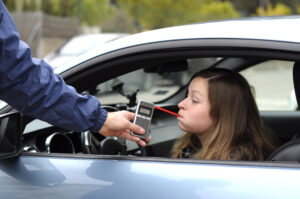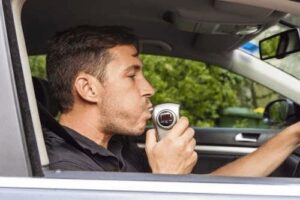DUI Breath Testing in Greenville
Serving Upstate South Carolina and beyond, Greenville, Clemson, Spartanburg
Do You Need Legal Help?
Get the Help You Need From Our Experienced Defense Team
Learn More About Us
Download Our DUI Guide
Learn what you should and shouldn't do to help your DUI case.
DUI Breath Testing in Greenville
If you’ve recently been arrested for DUI in Greenville, SC, you may be feeling overwhelmed and uncertain about your rights during a breathalyzer test. At The Bateman Law Firm, we understand the anxiety and confusion that can accompany such situations. We aim to provide clear and concise information to help you understand your rights when asked to take a breathalyzer test during a DUI stop in Greenville, SC. It’s important to know that while you are not legally required to submit to a breath test – South Carolina’s implied consent law carries significant consequences for refusal. We are here to guide you through this challenging process and help you pursue the best possible outcome.
Understanding South Carolina’s Implied Consent Law
South Carolina operates under an implied consent law, which means that by obtaining a driver’s license and driving on the state’s roads, you have impliedly consented to chemical testing, such as breathalyzer tests, if law enforcement suspects you of DUI. While you have the right to refuse a breathalyzer test, doing so triggers specific legal consequences.
The Consequences of Refusing a Breathalyzer Test
Refusing to take a breathalyzer test in South Carolina can lead to immediate consequences, primarily the suspension of your driving privileges. These consequences can vary depending on your prior DUI convictions:
- First Offense: If you refuse a breathalyzer test for the first time, your driver’s license will be suspended for six months.
- Second Offense: Refusal for a second time within ten years of a previous DUI conviction results in a nine-month license suspension.
- Third or Subsequent Offense: A third or subsequent refusal within ten years of prior DUI convictions leads to a one-year suspension of your driver’s license.
It’s crucial to note that these suspensions are in addition to any penalties you may face if convicted of DUI in court.
Breathalyzers in Greenville, SC
If you’ve been arrested for DUI in Greenville, SC, you’re likely familiar with the Datamaster breathalyzer, a crucial tool used by law enforcement to measure blood alcohol content (BAC). However, it’s important to recognize that the Datamaster breathalyzer is not infallible and can yield inaccurate results. This is where The Bateman Law Firm steps in to defend your rights and challenge the reliability of the breath test. In this section, we will delve into what the Datamaster breathalyzer is and why selecting our experienced DUI attorneys can make a significant difference in your case.
What is a Datamaster Breathalyzer?
The Datamaster breathalyzer is a device used by law enforcement to estimate a person’s BAC by analyzing their breath sample. It’s a crucial tool in DUI arrests, as it provides the evidence needed to support charges against individuals suspected of driving under the influence. However, it’s essential to understand that the Datamaster, like all machines, has limitations.
The Reliability Issue
One significant concern with the Datamaster breathalyzer is its reliability. It’s not uncommon for the machine to produce false readings or experience technical errors. These inaccuracies can result from various factors, including:
- Calibration Errors: If the Datamaster is not correctly calibrated, it may provide incorrect BAC readings. Regular calibration is essential to maintaining its accuracy.
- Maintenance Issues: Neglecting regular maintenance can lead to problems with the machine’s functionality. Dust, dirt, or malfunctions in critical components can compromise its accuracy.
- Human Errors: Even when the Datamaster is working correctly, the operator’s actions during the test can impact the results. Mishandling or improper administration of the test can lead to inaccuracies.
Frequently Asked Questions About Breath Tests for DUI in Greenville, SC
If you’ve recently been arrested for DUI in Greenville, SC, you likely have questions about breath tests and their implications. To help you better understand your situation, we’ve compiled a list of frequently asked questions with informative answers.
A breath test, often referred to as a breathalyzer test, is used to measure your Blood Alcohol Content (BAC). Law enforcement administers this test to determine if you were operating a vehicle while impaired by alcohol or drugs. It’s a critical tool in DUI cases to provide evidence of intoxication.
Yes, you have the right to refuse a breathalyzer test in South Carolina. However, it’s essential to be aware that refusing the test comes with consequences, including potential driver’s license suspension and the possibility of DUI charges.
Refusing a breathalyzer test in South Carolina can lead to an administrative suspension of your driver’s license, even if you’re not convicted of DUI. The length of the suspension varies depending on prior DUI convictions.
- First Offense: Six-month license suspension.
- Second Offense: Nine-month license suspension.
- Third or Subsequent Offense: One-year license suspension.
Breathalyzer test results are not infallible. These machines can yield inaccurate readings for various reasons, including calibration errors, maintenance issues, and human errors during administration. False positives and false negatives are possible, which is why it’s crucial to consult with an experienced DUI attorney.
In South Carolina, if your BAC is at or above .08, it may be inferred that you were driving impaired. If your BAC is below .05, you are conclusively presumed not to be impaired. In the .05 to .08 BAC range, there is no presumption as to your level of impairment, allowing for legal challenges.
The Bateman Law Firm specializes in DUI defense in Greenville, SC. Our experienced attorneys can assist you by:
Challenging the administrative suspension of your driver’s license.
Providing comprehensive legal defense, investigating all aspects of your case.
Exploring alternative resolutions to mitigate the impact on your record and driving privileges.
Yes, it’s highly recommended to consult with an experienced DUI attorney if you’ve refused a breathalyzer test or failed one. An attorney can help protect your rights, challenge the consequences of your refusal, and build a strong defense strategy to achieve the best possible outcome in your case.
Why Choosing The Bateman Law Firm Matters
When you’re facing DUI charges based on Datamaster breathalyzer results, it’s crucial to have a skilled Greenville DUI attorney by your side. Here’s why choosing The Bateman Law Firm can make a difference:
1. Scrutinizing the Breath Test
Our experienced DUI lawyer understands the intricacies of the Datamaster breathalyzer and its potential for inaccuracies. We will thoroughly review the evidence in your case, including the breath test results, to identify any issues that may cast doubt on their reliability.
2. Investigating Maintenance and Calibration Records
To achieve the best possible outcome for your case, we conduct a comprehensive investigation into the maintenance and calibration records of the Datamaster machine used during your arrest. Any discrepancies or irregularities can be critical in challenging the validity of the test results.
3. Protecting Your Rights
At The Bateman Law Firm, we are dedicated to protecting your rights throughout the legal process. We will ensure that law enforcement followed proper procedures during your arrest and breath testing. If any errors or violations occurred, we will use them to your advantage.
Consequences of Refusing a Breathalyzer Test
Refusing to take a breathalyzer test in Greenville, SC can lead to several immediate consequences and legal challenges. It’s important to understand these potential outcomes:
Administrative License Suspension: Under South Carolina’s implied consent law, your driver’s license can be suspended if you refuse to take a breathalyzer test, even if you’re not ultimately convicted of DUI. The duration of the suspension varies depending on prior DUI convictions.
- First Offense: Six-month license suspension.
- Second Offense: Nine-month license suspension.
- Third or Subsequent Offense: One-year license suspension.
Prosecution for DUI: While refusing the breathalyzer test may limit the evidence against you, it does not guarantee that you won’t be prosecuted for DUI. Law enforcement can still rely on other evidence, such as field sobriety tests, observations, and witness statements, to build a case against you.
Legal Challenges: It’s important to remember that refusing a breathalyzer test does not automatically result in acquittal. Prosecutors can use your refusal as evidence of guilt in court, and defending against these charges can be challenging without the right legal representation.
Understanding BAC Levels and Presumptions
In South Carolina, your Blood Alcohol Content (BAC) level plays a crucial role in DUI cases:
- If your BAC is at or above .08, it may be inferred that you were driving impaired.
- If your BAC is below .05, you are conclusively presumed not to be impaired.
- In the .05 to .08 BAC range, there is no presumption as to your level of impairment, leaving room for interpretation and defense strategies.
Contact Our DUI Lawyer with Experience Handling Greenville DUI Breath Testing
If you’ve recently been arrested for DUI in Greenville, SC, and have refused a breathalyzer test, it’s crucial to take action immediately. The Bateman Law Firm is here to provide you with the legal guidance and representation you need during this challenging time.
Contact us today for your free consultation and take the first step toward securing your future. We are committed to helping you through this challenging time, and we look forward to assisting you in your DUI defense in Greenville, SC.
Client Reviews
![]()
“Very knowledgeable and thorough in his preparation and representation of his clients. He cares for each of his clients and works extremely hard to achieve… results. I highly recommend this lawyer.”













